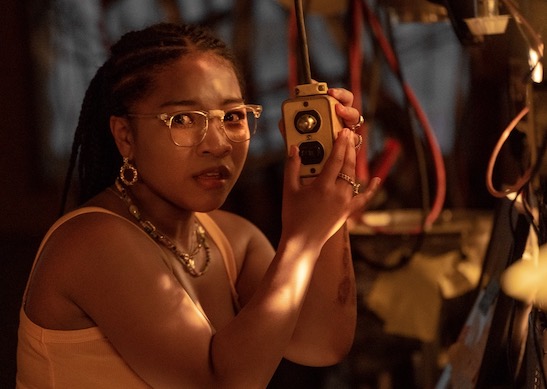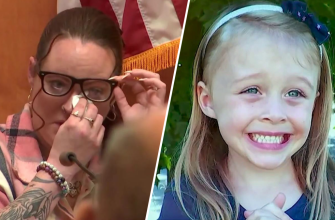Mary Shelley was all of 18 years old when she wrote “Frankenstein; or, The Modern Prometheus.” Granted, the story of Victor Frankenstein and the monster he cobbled together from a variety of corpses would have benefited from a strong editorial hand, but few books have had a premise with quite as much staying power. Its impact on culture far-and-wide is all but immeasurable.
“The Modern Prometheus,” but not “Frankenstein,” is name-checked several times over in “The Angry Black Girl and Her Monster,” the new film from Bomani J. Story. The picture is the umpteenth version of this particular tale of science gone too far. This time around, the mad doctor is a young woman who is close to the same age as Shelley when she wrote the novel. Vicaria (Laya DeLeon Hayes) is a precocious high school student convinced that death is not an immutable biological fact but, rather, a disease in need of a cure.
Vicaria has experienced an abundance of death and distress in her life. Her mother passed away when she was young; her father is a drug addict. The movie begins with older brother Chris (Edem Atsu-Swanzy) being killed in a gang-related shooting. As the camera descends upon the patch of grass on which Chris has toppled, a pair of hands emerges from the bottom of the screen, grabbing him by the ankles and dragging the body outside of the frame. Vicaria’s cousin, Aisha (Reilly Stith), wonders just why it is that anyone would want to abscond with Chris’s remains.
Vicaria is notably mum during this conversation. Only later do we follow her to a condemned industrial space in which she has jerry-rigged a laboratory whose constituent parts look to have been rescued from medical dumpsters, construction sites, and the returns section at Radio Shack. In the center of this clutter is the long, draped platform we recognize from any number of cinematic tellings of “Frankenstein.” The body of Chris lies upon it. Vicaria is intent on bringing him back to life. To make a well-worn story short, she succeeds.
And then things go … wrong. The gratifications inherent in a genre film include how it hits certain predictable beats. The challenge for a filmmaker is how those beats are to be elaborated upon and given variety within the strictures of the genre. Changing the sex and age of the good doctor is one way Mr. Story does so. Changing the setting from a generic 19th-century European locale to a hard-hit inner city neighborhood circa 2020 also is significant. So too, of course, is the African-American cast.
“The Angry Black Girl and Her Monster” begins as a novelty with a chip on its shoulder, dips its toe into comedy, and then gains steam as an out-and-out horror film. The film is often brutal — the intersection between gangbangers and a reanimated cadaver practically guarantees as much — but the gruesome parts aren’t gratuitous. When Mr. Story brings his camera up close to the basting-and-stitching that is a necessary part of creating a “Modern Prometheus,” he does so within the rational logic of an irrational tale.
Times being what they are, “The Angry Black Girl and Her Monster” touches upon politics in ways that can’t help but come across as more of the same. Aisha, here, is a veritable mouthpiece for the bromides of Critical Race Theory. Then again, the father (Chad L. Coleman) proves more expansive in his intellectual purview. And let’s not forget that Vicaria, like Victor Frankenstein, is beneficiary of the Enlightenment even as she pursues it to dubious ends.
While Mr. Story does touch upon issues of class, race, and poverty, his primary goal was to make audience members jump from their seats. It’s to his credit that he’s done just that and, even more difficult, come up with an ending that is genuinely unsettling. Family, it turns out, is forever, albeit in ways that most of us wouldn’t want to imagine. “The Angry Black Girl and Her Monster” is, on its own modest terms, the best adaptation of the Frankenstein myth we’ve had in some time.








